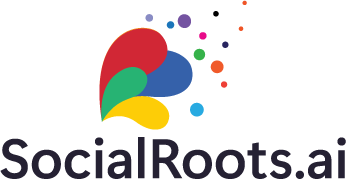In today’s fast-paced world, healthcare is no longer confined to hospitals and clinics. It has expanded into communities, homes, and even digital spaces, requiring a coordinated approach that bridges medical care with social support services. This is where Community Healthcare Software steps in as a transformative solution—reshaping how organizations connect, share information, and deliver care to the people who need it most. Far from being a simple data management tool, it serves as the backbone of community health ecosystems, streamlining communication between healthcare providers, nonprofit organizations, and social care agencies.
Community healthcare management is more than treatment—it’s about prevention, long-term monitoring, and building networks of trust. Whether it’s tracking patient referrals, coordinating between multiple service providers, or creating a single, secure hub for vital information, modern software is turning fragmented care systems into unified forces for good.
Bridging Gaps Between Medical and Social Care
Historically, medical and social services operated in silos, leading to duplicated efforts, missed opportunities for timely interventions, and patient frustration. Community healthcare software integrates these spheres, ensuring that everyone from primary care physicians to housing assistance workers can collaborate in real time.
A well-designed platform captures a patient’s complete care journey—from their initial contact to ongoing support—allowing authorized users to access the same up-to-date information. This reduces the risk of miscommunication, prevents delays in treatment, and fosters a more holistic care approach. For example, if a patient discharged from the hospital also needs food assistance, the referral can be tracked within the same system, ensuring nothing falls through the cracks.
Centralized Data, Personalized Care
One of the biggest advantages of community healthcare software is centralized data management. Instead of juggling multiple spreadsheets, emails, and phone calls, organizations can rely on a secure, cloud-based hub that stores every detail—case histories, referral status, contact logs, and outcome reports.
This centralization empowers care teams to personalize their services. Instead of treating each appointment as an isolated event, providers can see a broader picture—how social factors like housing stability or employment influence a person’s health outcomes. This insight drives better decision-making and ensures that interventions are tailored to each individual’s needs.
Seamless Referrals and Resource Tracking
Referrals are the lifeblood of community healthcare networks, but without a system to track them, they can easily become bottlenecks. Modern software streamlines this process by offering automated referral workflows, real-time status updates, and follow-up reminders.
When a healthcare provider refers a patient to a partner organization, both parties can see exactly where the referral stands. Did the patient make an appointment? Was the service completed? This transparency not only strengthens accountability but also builds trust among providers and patients alike.
Improving Community Health Outcomes
The ultimate goal of any healthcare initiative is to improve outcomes—and software makes that measurable. By gathering and analyzing data from across the network, community healthcare systems can identify trends, assess the effectiveness of programs, and make data-driven improvements.
For example, if analysis shows that a high percentage of referrals for mental health services remain incomplete, organizations can dig deeper to find and address the barriers—whether that’s transportation, appointment availability, or awareness.
Strengthening Partnerships with Transparency
Partnerships thrive on mutual trust, and nothing fosters trust like transparency. With community healthcare software, every participating organization has visibility into shared cases and outcomes. This eliminates the “black box” effect, where referrals disappear into uncertainty, and instead promotes a culture of openness and shared responsibility.
Transparency also supports funding and reporting requirements, allowing organizations to demonstrate their impact to stakeholders and secure future resources.
Enhancing Patient and Client Engagement
Patients are no longer passive recipients of care—they’re active participants. Many community healthcare platforms now include client-facing features like appointment reminders, progress tracking, and secure messaging. This two-way communication empowers individuals to take ownership of their health journey while staying connected to their care team.
When patients feel informed and supported, they are more likely to follow through with treatment plans, attend appointments, and seek help when needed.
Security and Compliance First
In healthcare, security isn’t optional—it’s critical. Community healthcare software is built with robust security measures, ensuring compliance with data protection regulations such as HIPAA. Features like encrypted communications, role-based access control, and secure cloud hosting protect sensitive information from unauthorized access, while still making it available to those who need it.
Scalability for Growing Needs
As communities evolve, so do their healthcare needs. The right software can scale effortlessly—supporting more users, integrating with additional services, and expanding reporting capabilities without overhauling the system. This adaptability ensures that the investment remains valuable for years to come, even as new challenges emerge.
A Future-Ready Approach to Community Wellbeing
Community healthcare is moving toward a model where technology supports human connection rather than replacing it. By breaking down silos, improving communication, and giving everyone access to the right information at the right time, community healthcare software creates stronger, healthier, and more resilient communities.
It’s not just about streamlining workflows—it’s about building an ecosystem where healthcare providers, social workers, and community members work side-by-side toward a shared goal: better health for all. In this new era, the organizations that embrace digital transformation will be the ones shaping the future of community wellness.





Comments